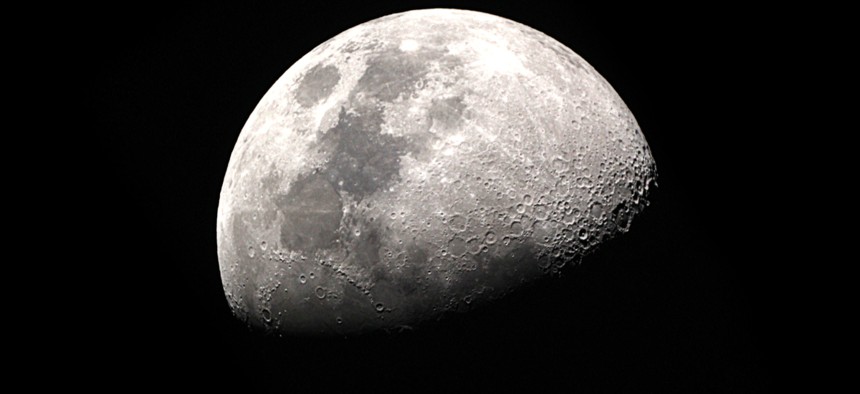NASA Confirms Water on Moon’s Sunlit Surface

taffpixture/Shutterstock
It’s an important discovery that could impact future Moon missions.
During a press conference Monday, NASA confirmed the existence of water on the moon’s sunlit surface, indicating water is not limited to the moon’s cratered, cold crevices.
“We had indications that H2O—the familiar water we know—might be present on the sunlit side of the Moon,” said Paul Hertz, director of the Astrophysics Division in the Science Mission Directorate at NASA Headquarters in Washington. “Now we know it is there. This discovery challenges our understanding of the lunar surface and raises intriguing questions about resources relevant for deep space exploration.”
Scientists first confirmed the presence of water ice on the lunar surface in 2018. However, subsequent research published Monday in Nature Astronomy—carried out in part by the Stratospheric Observatory for Infrared Astronomy, or SOFIA—confirmed the existence of water molecules in the Clavius Crater, among the largest craters on the Moon visible from Earth. Comparatively, the Sahara Desert has 100 times more water in its soil than the sunlit areas on the moon examined by NASA, which appear to contain about one 12-ounce bottle of water per cubic meter of soil.
Yet officials said water’s existence at all in these extreme surface conditions bears further investigation, including how it may impact NASA’s Artemis program, which aims to send the first woman and next man to the moon in 2024. SOFIA is a modified Boeing 747SP jetliner equipped with a 106-inch diameter telescope that flies at altitudes of up to 45,000 feet, far above the vast majority of water vapor in Earth's atmosphere. Using its infrared camera, SOFIA picked up specific wavelengths signifying water molecules on the moon.
“Without a thick atmosphere, water on the sunlit lunar surface should just be lost to space,” said Casey Honniball, the lead author who published the results from her graduate thesis work at the University of Hawaii at Mānoa in Honolulu. Honniball is now a postdoctoral fellow at NASA’s Goddard Space Flight Center in Greenbelt, Maryland. “Yet somehow we’re seeing it. Something is generating the water, and something must be trapping it there.”
On a press call Monday, officials speculated the water could have been deposited by micrometeorites or by solar wind, which sends hydrogen molecules from the sun at high speeds that chemically react with oxygen-bearing minerals on the moon’s surface. It also raises intriguing questions about whether future astronauts will be able to take advantage of the lunar water. Water is obviously a vital resource for human space exploration—necessary for the human body to function while also easily converted to fuel or oxygen for humans to breath. But it’s also heavy and costly to take from Earth.
“Being able to use water on the moon would be a big help for us. Knowing where we can find water is a good first step,” Jacob Bleacher, chief exploration scientist for NASA’s Human Exploration and Operations directorate, told reporters. “Anytime we don’t need to pack water for our trip, we can pack other items with us.”



